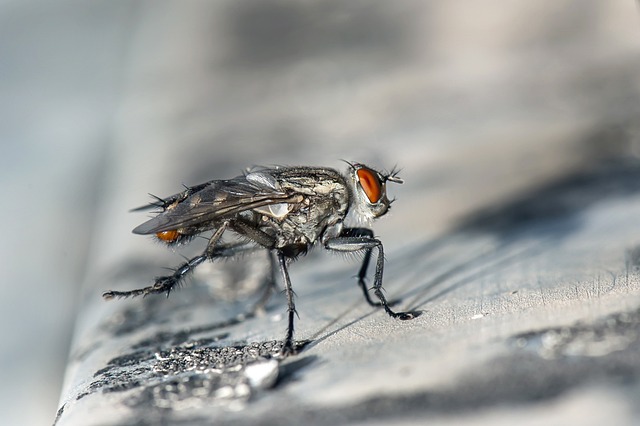Bed bug infestations are challenging due to their creative entry points and ability to survive without feeding for months. Bed bug heat treatment stands out as an effective, eco-friendly solution. Using high temperatures (120-150°F) above, this method kills bed bugs and eggs in all stages, reaching hidden areas chemicals miss. Heat treatment leaves no harmful residues, minimizes structural damage, and preserves belongings. Preparation includes decluttering, removing personal items, and sealing cracks. Post-treatment, regular cleaning, inspection, and monitoring prevent reinfestation. Opt for professionals specializing in bed bug heat treatment, checking references and online reviews.
Professional bed bug removal is crucial in addressing infestations that have become a growing concern worldwide. Understanding these tiny pests and their behavior is the first step towards effective control. This article explores advanced solutions, focusing on bed bug heat treatment as a game-changer in pest management. We delve into the science behind it, its advantages over traditional methods, and provide a comprehensive guide to preparation, post-treatment care, and selecting the right professionals for swift and lasting relief from these relentless invaders.
Understanding Bed Bug Infestations: Common Entry Points and Behavior

Bed bug infestations can be puzzling, as these tiny pests find creative ways to enter homes and establishments. Common entry points include cracks in walls, floorboards, and baseboards, as well as through open windows, doors, or even on pets and their belongings. Bed bugs are highly adaptable and often go unnoticed until a full-blown infestation occurs. They prefer warm temperatures and feed on human blood, typically targeting sleep areas like beds and furniture.
Understanding their behavior is crucial when addressing an infestation. Bed bugs travel slowly and move from one host to another in search of a meal. They can survive for months without feeding, making them persistent and challenging to eliminate. Heat treatment, such as bed bug heat removal methods, is an effective solution due to its ability to reach and destroy eggs and adults quickly. This process involves raising the temperature to levels that are harmful to bed bugs, ensuring a thorough and efficient removal from infested areas.
Traditional Methods vs. Heat Treatment: Advantages of Bed Bug Heat Removal

Traditional methods of bed bug removal, such as chemical treatments, often involve potent pesticides that can leave residual traces in your home. These chemicals may pose health risks to residents and pets, especially if not applied correctly. On the other hand, bed bug heat treatment offers a safer and more effective alternative.
Heat treatment involves using high temperatures—typically above 120°F (49°C)—to kill bed bugs and their eggs at all stages of development. This method is highly efficient because it penetrates cracks, crevices, and hidden areas where bed bugs like to hide. Unlike chemicals, heat treatment doesn’t leave behind harmful residues and is considered a greener, more environmentally friendly solution for eliminating these persistent pests.
How Bed Bug Heat Treatment Works: The Science Behind It

Bed bug heat treatment is a highly effective and eco-friendly method for eliminating these persistent pests from homes, businesses, and institutions. The science behind it involves raising the temperature to levels that are fatal to bed bugs and their eggs, while minimizing damage to structures and personal belongings. During a bed bug heat treatment, specialized equipment heats a space to temperatures typically between 120-150°F (49-66°C), causing bed bugs and their offspring to perish instantly.
This process is carefully controlled to ensure safety for occupants and to prevent the spread of heat damage. Trained professionals use temperature sensors and monitoring devices to ensure even heating and rapid deactivation of bed bug populations. Unlike chemical treatments, which can leave behind residual pesticides, heat treatment does not produce any harmful byproducts, making it a safer and greener solution for both people and the environment.
Preparing for Heat Treatment: Steps to Ensure Optimal Results

Preparing for bed bug heat treatment involves a series of steps designed to optimize results and ensure the safety and effectiveness of the process. First, it’s crucial to declutter the affected area by removing all personal belongings, such as clothing, furniture, and electronics, that cannot be sealed in sturdy containers. This step not only facilitates thorough treatment but also minimizes the risk of damage to valuable items.
Additionally, vacuming and wiping down surfaces with a cleaner that doesn’t leave residue is essential. Bed bugs are attracted to carbon dioxide and heat, so sealing cracks, gaps, and vents can help contain them during treatment. It’s also important to inform all household members about the upcoming process to ensure their cooperation in maintaining a calm and controlled environment throughout the bed bug heat treatment.
Post-Treatment Care: Maintaining a Pest-Free Environment

After a successful bed bug heat treatment, maintaining a pest-free environment is crucial. This involves regular cleaning and inspection to ensure no residual bugs or eggs have survived. Vacuuming thoroughly, particularly focusing on crevices, cracks, and furniture seams, helps remove any remaining bed bugs or their sheddings. Using hot water (above 120°F) for laundry and promptly disposing of vacuum bags are effective preventive measures. Additionally, sealing gaps around windows and doors, repairing torn screens, and maintaining a clean living space overall significantly reduces the risk of reinfestation.
Post-treatment, it’s vital to understand that bed bugs can survive for several months without feeding. This means persistent monitoring is essential. Regularly checking mattresses, box springs, and furniture for any signs of bed bugs or their exoskeletons can help catch potential recurrences early. Using interceptors or sticky traps around vulnerable areas can provide visual evidence of a bed bug problem’s absence, offering peace of mind and ensuring the treated space remains pest-free.
Selecting a Professional: Tips for Choosing the Right Bed Bug Removal Service

When selecting a professional bed bug removal service, it’s crucial to choose a reputable company with proven expertise in bed bug heat treatment. Start by asking for references and checking online reviews to gauge their customer satisfaction ratings. Reputable companies will offer detailed proposals outlining the scope of work, methods used, and estimated costs, ensuring transparency from the outset.
Consider the specific heat treatment methods offered as well. Bed bug heat treatment is a highly effective method that uses precise temperature control to eliminate bed bugs at all stages of their life cycle. Look for professionals who employ advanced equipment designed to target and destroy bed bugs without damaging your belongings. Ensure they provide warranties or guarantees on their work to give you peace of mind.
